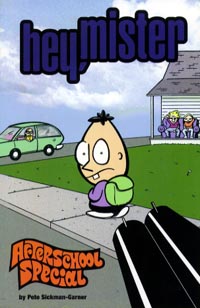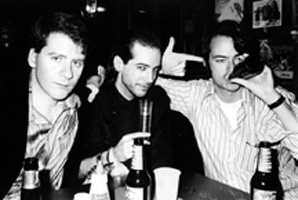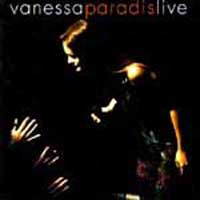 Underground Station
Underground Station
by Bruce Sweeney
My cynical father used to say that Christmas time was a season for cops and kids… but I’m going to have to add consumers to that to give it balance and alliteration. Think about it: December and January is when Hollywood, publishing, and recorded music bombard us with year-end product. Clearly, they’re motivated to part us from our Christmas coins and garner any positive critical attention like Oscars, Emmy’s, or assorted book awards.
Whereas I’m ordinarily awash in comix product, by late year/early year I’m asea in fresh material with no hope of ever getting caught up: let alone drawing even. This article will therefore devote itself to material being seen; as opposed to the comprehensive scene.
To go out on a limb, the best American item of 1998 was Last Gasp’s (777 Florida St. S.F., CA 94110) Collected Checkered Demon Vol #1. This..is..one..great..book.. At last, the last of the Zap contributors has his own limited hardcover. For those of you unfamiliar with underground comics and their legacy, Zap Comics, initiated by Robert Crumb, was the birthplace of undergrounds and their larger-than-life contributors. Crumb, Moscoso, and Spain have all had successful solo books.
The last, then, of the great Zap contributors is the great S. Clay Wilson, king of the bad boys. His material was much driven by his formative years as a Lawrence, Kansas biker. Kansas itself has a history of being a post-civil-war hotbed of regional discontent. Wilson brought an uncanny sense of density and intricate detail to his wild visions of excess and debauchery. His illustrated biker gangs would fight to the most bloody and gory deaths against mad lesbians from outer space, while limbs would be slashed, members would be hacked, and carotid arteries would spew and gush. Through all this carnage and excess, Wilson’s bizarrely excessive renderings were executed with a subtle but pervading sense of humor. Coupled with all that is Wilson’s immense capacity for detail and crowding.
In my opinion, the Collected Checkered Demon, Wilson’s mad character that dominates the stories, is nothing short of one of the most engaging pieces of underground artwork between any covers for the year. It’s $22.95 and features Wilson’s Checkered Demon and countless stories from the underground comics where the demon out-fights, out-drinks, and out-fucks countless bikers, pirates, aliens, and vampires. Further, the book is also filled with obscure ads and posters featuring his over-the-top demon and a bounty of full-page ads and posters with Wilson’s demented, tight, and busy renderings.
Fantagraphic Books (7563 Lake City Way N.E. Seattle, WA 98115) is a constant motherlode of material. Sadly, they’ve just released the last of Peter Bagge’s Hate line. Bagge has taken time off from his cartooning to pursue writing, which suggests a dry year for his characters, Buddy Bradley and Stinky.
Hate Jamboree is the last known comic book product of Bagge’s line. Warning: it’s sorta filler. For $4.50, only about a third of the 62 pages are Bagge cartoon material. The rest is narrative, commentary, history, and prattle. Not why we’re here, unless we’re such hardcore Bagge fans that narrative tidbits will fill this void.
If Fantagraphics’ Hate Jamboree doesn’t quite hack it, stay tuned because the big F always produces more shit than a Christmas turkey, and much of it is quality material. They’ve got out Poot #3, Nimrod #2, Penny Century #4, Evil Eye #1 by Richard Sala, Luba #2, Artbabe vol. 2 #3, Meatcake #8, and Zero Zero #24, each with a $2.95 cover price. One of their funkiest titles is Minimum Wage #9, almost worth the cover price for the Bob Fingerman cover alone.
My vote for THE best underground-related comic item of the year worldwide comes from Germany, published by Zweitausendeins (Porsche Strade 37-39, D 60381, Frankfurt am Main, Germany). I got this directly – they do accept Visa but not Mastercard – but I believe Fantagraphics carries it as well. First, it’s a handsome book with a leatherette hardcover and a cardboard sleeve. The book itself is 278 pages of intensely personal sketchwork by Robert Crumb, including unpublished cartoon strips.
Much of the work is inspired by his relocation to France, the new old-world around him. All of it is a walk through the distorted window that is Crumb’s persona. He’s brutally honest here and painfully insightful as we watch a major American artist lurch into his fifties. This is very fresh material from Crumb, running into the mid-’90s, and you can see his apparent growth leap off the page. Ya gotta believe me, this book just soars!
Down the street, but still a worthy publication, is Kitchen Sink’s (76 Pleasant St. Northampton, MA 01060) The Life and Times of R. Crumb by Monte Beauchamp. An 182-page softcover, it’s adorned mostly with familiar Crumb art, except for an eight-page insert of Crumb’s trading cards, familiar comic covers, and some unfamiliar album covers.
The book is filled with reminiscences and observations by fans and celebrities, many of whom seem bent on describing the enormous impact that they had on Robert Crumb’s life. Roger Ebert, Jim Jarmusch, S. Clay Wilson, and Spain are just some of the dignitaries who weigh in with anecdotes and insights into the Crumb persona.
Loompanics always has fresh and twisted material. Count on the folks at PO Box 1197 Port Townsend, WA 98368. Their most interesting title to date has a cover by my friend, Spain, an original Zapper and an incredible military historian. Kill-as-Catch-can: Wrestling Skills for Street-fighting is by Ned Beaumont and illustrated by Spain. I hope to cover a Spain project for Nightmare Alley in my next article.
The Spain cover is the stark business of a street encounter when a bouncer subdues an unwelcome guest. Spain’s only contribution is the cover however, and one would hope he’d be encouraged by Loompanics to contribute more internal illustrations as well.
You’ve heard me rant about the value of the true independent small publishers and one of the better ones is Top Shelf (PO Box 1282 Marietta, GA 30061-1282). This particular line is an assemblage of creative people who can present an intriguing story through graphics. I highly recommend this particular publisher. It’s a real opportunity to see some of the undiscovered talents who are bubbling below the surface of widespread publication.
According to the N.Y. Times “Arts & Ideas” (Sat. Jan 2,1999) there has been ample rise of the “graphic novel.” The graphic novel, allegedly, started in 1979 with 82-year old illustrator Will Eisner’s Contract with God. Eisner was the artist behind The Spirit – a semi-forgotten semi-hero who Denis Kitchen republished though his underground comic company, Kitchen Sink.
Contract with God was first, and was the grandfather of such projects as Art Spiegelman’s Maus and Howard Cruse’s great coming-of-gay-age title, Stuck Rubber Baby.On the British front lies Bryan Talbot’s great The Tales of One Bad Rat by Dark Horse which courageously details the experience of child abuse.
So, amidst the excesses of S. Clay Wilson’s great Collected Checkered Demon and R. Crumb’s latest hot-tip capitalist escapade lies as always, the truth – in every field of pop expression there is a range of quality from primitive to superlative. It’s up to you, gentle reader, to sift through the crap and get to the gems. As Robert Crumb once put it, “It was ever thus.”



